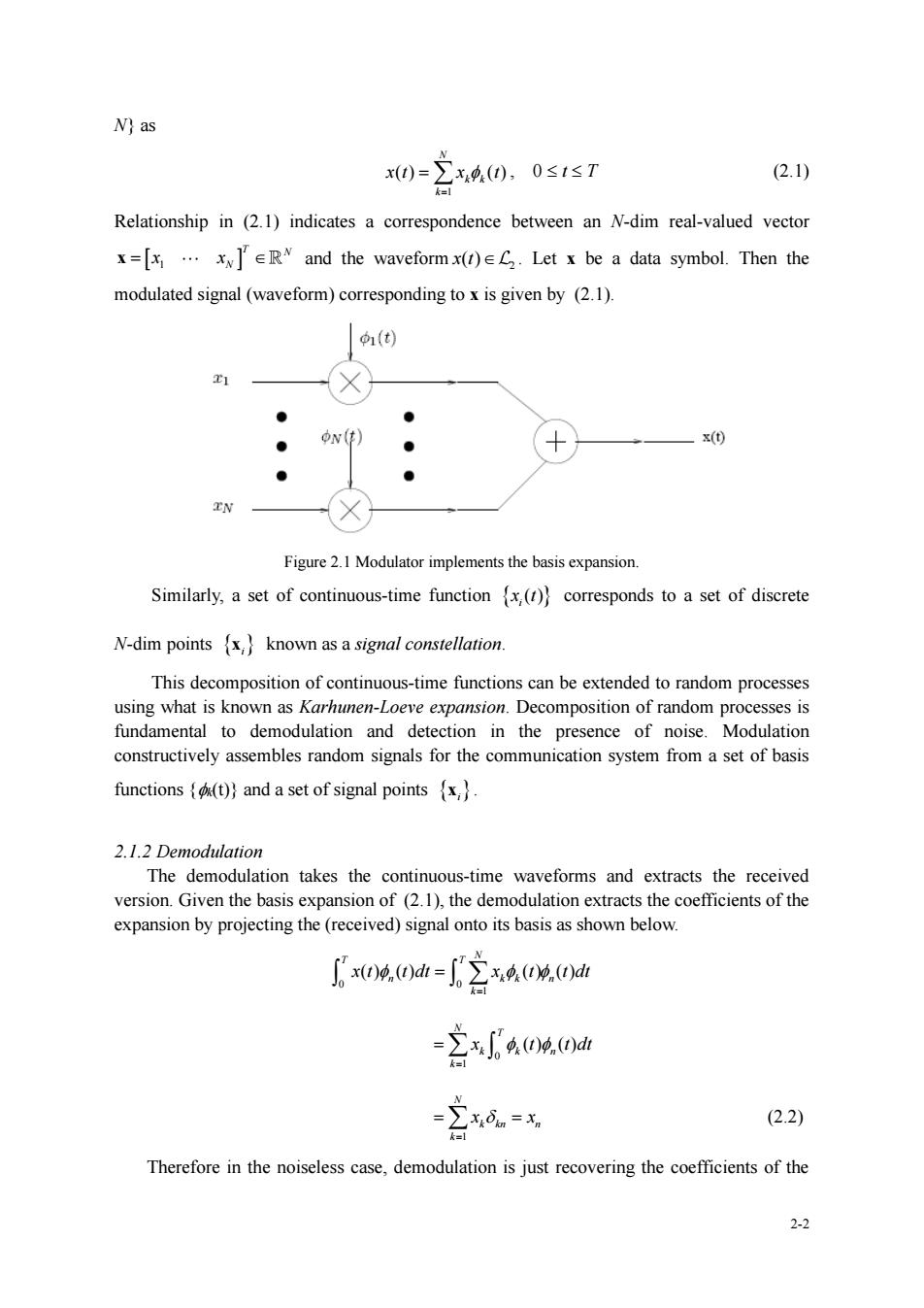正在加载图片...

N)as 0-2400s1s7 2.10 Relationship in (2.1)indicates a correspondence between an N-dim real-valued vector x=[x.xxER and the waveformx(r)eC.Let x be a data symbol.Then the modulated signal(waveform)corresponding tox is given by (2.1). (t) ● ON() ● N Figure Modulator the basis expansion. Similarly,a set of continuous-time function()corresponds to a set of discrete N-dim pointsx known as a signal constellation. ous-time functions can be extended to random processes using what is known as Karhunen-Loeve expansion.Decomposition of random processes is fundamental to demodulation and detection in the presence of noise.Modulation constructively assembles random signals for the communication system from a set of basis functions())and a set of signal pointsx 2.1.2 Demodulation The demodulation takes the continuous-time waveforms and extracts the received version.Given the basis expansion of(2.1),the demodulation extracts the coefficients of the expansion by projecting the(received)signal onto its basis as shown below. 00t=2A0e0a =立x0404.0d =26= (22) Therefore in the noiseless case,demodulation is just recovering the coefficients of the 3 2-2 N} as 1 ( ) ( ) N k k k x t x t = = , 0 t T (2.1) Relationship in (2.1) indicates a correspondence between an N-dim real-valued vector 1 T N N x = x x and the waveform 2 x t( ) . Let x be a data symbol. Then the modulated signal (waveform) corresponding to x is given by (2.1). Figure 2.1 Modulator implements the basis expansion. Similarly, a set of continuous-time function x t i ( ) corresponds to a set of discrete N-dim points xi known as a signal constellation. This decomposition of continuous-time functions can be extended to random processes using what is known as Karhunen-Loeve expansion. Decomposition of random processes is fundamental to demodulation and detection in the presence of noise. Modulation constructively assembles random signals for the communication system from a set of basis functions {k(t)} and a set of signal points xi . 2.1.2 Demodulation The demodulation takes the continuous-time waveforms and extracts the received version. Given the basis expansion of (2.1), the demodulation extracts the coefficients of the expansion by projecting the (received) signal onto its basis as shown below. 0 0 1 ( ) ( ) ( ) ( ) N T T n k k n k x t t dt x t t dt = = 0 1 ( ) ( ) N T k k n k x t t dt = = 1 N k kn n k x x = = = (2.2) Therefore in the noiseless case, demodulation is just recovering the coefficients of the